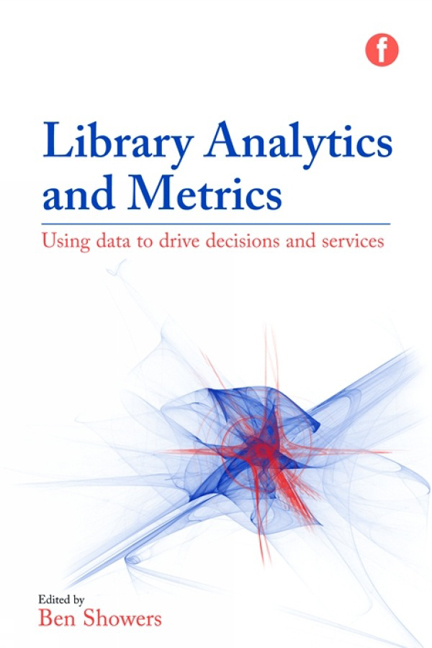Book contents
- Frontmatter
- Dedication
- Contents
- List of figures and tables
- Contributors
- Acknowledgements
- Introduction: getting the measure of analytics and metrics
- 1 Library data: big and small
- 2 Data-driven collections management
- 3 Using data to demonstrate library impact and value
- 4 Going beyond the numbers: using qualitative research to transform the library user's experience
- 5 Web and social media metrics for the cultural heritage sector
- 6 Understanding and managing the risks of analytics
- 7 Conclusion: towards a data-driven future?
- Index
4 - Going beyond the numbers: using qualitative research to transform the library user's experience
Published online by Cambridge University Press: 09 June 2018
- Frontmatter
- Dedication
- Contents
- List of figures and tables
- Contributors
- Acknowledgements
- Introduction: getting the measure of analytics and metrics
- 1 Library data: big and small
- 2 Data-driven collections management
- 3 Using data to demonstrate library impact and value
- 4 Going beyond the numbers: using qualitative research to transform the library user's experience
- 5 Web and social media metrics for the cultural heritage sector
- 6 Understanding and managing the risks of analytics
- 7 Conclusion: towards a data-driven future?
- Index
Summary
Chapter overview
In this chapter we turn our attention to ways of capturing and understanding more complex and difficult-to-measure variables, like the experience of using a service.
This chapter provides practical examples and techniques that have been used to gain a deeper understanding of user behaviours and motivations, both when interacting online and in the physical space of institutions and libraries. The two case studies in this chapter are about observing student and user behaviours, mapping the ways that they interact online and physically (with services, resources and each other) and how they use technology and space for learning and collaborating. The chapter highlights the increasing importance of this type of qualitative approach for understanding and shaping both the digital and physical spaces that students and users inhabit.
Two international case studies are featured in this chapter:
• CASE STUDY 4.1 Connaway, L. S., Hood, E. M. and Vass, C. E., Utilizing qualitative research methods to measure library effectiveness: developing an engaging library experience (OCLC), p. 82
• CASE STUDY 4.2 Lanclos, D., Ethnographic techniques and new visions for libraries (University of North Carolina, Charlotte), p. 96
Qualitative research and the user experience
When we talk about data helping to drive decision making in organizations we often assume that the kinds of data we're referring to are the ‘hard’ numbers: the number of users, the frequency of use and so on.
Yet, as organizations that deliver services and, more importantly, experiences, libraries, archives and cultural heritage institutions are ultimately interested in understanding the behaviours, motivations and needs of users. We want to be able not only to know what users do but also to understand what their experience is like.
Much of the current interest in this type of qualitative research in cultural and academic institutions has been driven by a number of factors, but central to these have been the technological changes that have transformed the information landscape. In particular, innovations in user experience – driven by digital companies and organizations – have radically changed the expectations and assumptions of anyone using online (and, indeed, physical) services.
Information
- Type
- Chapter
- Information
- Library Analytics and MetricsUsing Data to Drive Decisions and Services, pp. 79 - 112Publisher: FacetPrint publication year: 2015
